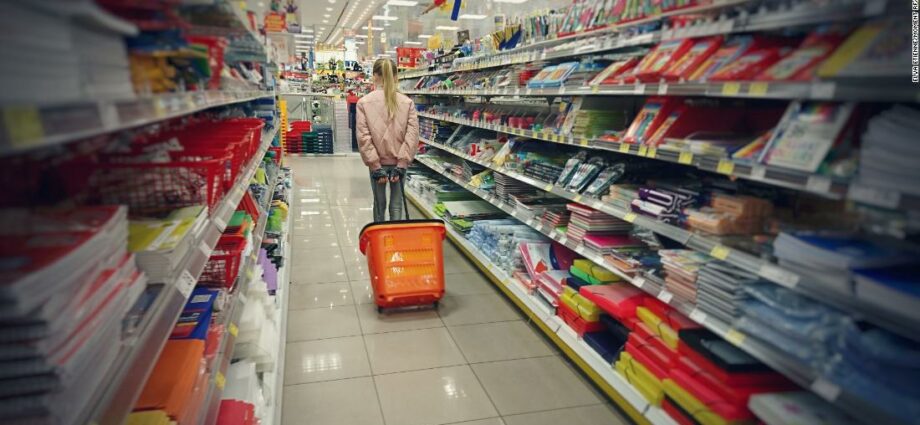New York (CNNBusiness)Shopping for back-to-school essentials is becoming a real struggle for families whose household budgets are stretched to the max by surging inflation.
Mid-July is typically when shopping for necessities such as clothes, shoes, backpacks, classroom supplies and gadgets for the new school year gets underway in earnest.
But as high inflation takes a bigger bite out of budgets, many households are scrambling to afford these annual purchases for their children.
“For this back to school season, we’re going to see price take the priority over brand,” said Kathy Gramling, head of Americas consumer markets with EY. “Brand or label importance in overall purchase decisions dropped from 24% in February to 17% in June.”
Consumers are no longer looking to make purchases based on status or keeping up appearances. This trend will impact their back to school shopping for the upcoming school year, Gramling said, citing EY’s most recent report on the state of the consumer.
“As consumers became concerned about rising living expenses, they have reduced their spending on new fashions and the latest gadgets and technology,” said Gramling.
Parents are expected to spend an average total of $864 on school items this year, about $15 more than last year, according to the National Retail Federation, the industry’s largest trade group. For those with children attending college, they’re expected to shell out an average of $1,199 this year, on par with 2021.
“Families consider back-to-school and college items an essential category, and they are taking whatever steps they can, including cutting back on discretionary spending, shopping sales and buying store or off-brand items, in order to purchase what they need for the upcoming school year,” said NRF President and CEO Matthew Shay.
Those measures still may not be enough to help parents afford what they need before school starts even as retailers like Walmart, who are bloated with excess inventory, are cutting prices on some products.
Struggling to cover the cost
Even as they cut back on discretionary purchases, parents say they are still taking on a heavier burden to pay for essential items.
An NRF back-to-school spending survey of 7,830 consumers conducted between June 30 and July 7 showed 68% are experiencing higher prices for the most popular school and college-related purchases, such as clothing, school supplies, shoes, electronics and furniture.
How are they budgeting for these purchases?
The survey showed 38% are cutting back their spending in other areas. Nearly 50% of households with incomes under $50,000 are taking this step while one third of households with incomes over $50,000 are doing the same.
Many families said they are radically changing their behavior: 18% of parents polled said they are working overtime or taking on additional hours at work, 17% are using buy now, pay later options, 14% are taking out additional credit cards and 12% are borrowing money or going into debt, the NRF report showed.
Alarm bells
“We’ve been polling consumers every other week and the first thing that set off alarm bells for me was the spike in the number of parents who don’t feel like they can afford all the school supplies this year,” said Claire Tassin, retail and e-commerce analyst with market data intelligence firm Morning Consult.
Morning Consult’s 2022 Back-to-School shopping report showed just 36% of parents said they would be able to pay for everything their kids’ need, down from 52% in 2021 when inflation was lower and more families had the benefit of stimulus checks and advance child tax credit payments.
“That’s a steep drop off,” said Tassin.
The report draws from surveys conducted in May and June among 2,178 parents of school-aged children planning on shopping for the 2022-2023 school year.
“Every month, families are making more and more tradeoffs,” Tassin said. “So their financial strain is becoming more urgent.”
“For parents right now, back-to-school shopping is unavoidable, but consumers more broadly will eventually hit a breaking point,” she added. “Ongoing economic hardships, particularly inflation, are putting increasing pressure on household budgets and could lead to a reduction in spending just in time for the holidays.”
Source: Read Full Article


